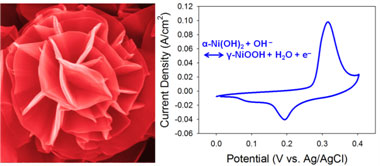
Professor Emeritus
kjd@kaist.ac.kr
+82-42-350-3921
- 1982 : Univ. of Florida (Ph.D. in Che. Eng.)
- 1976 : KAIST (M.S. in Chem. Eng.)
- 1974 : Seoul National Univ. (B.S. in Chem. Eng.)
- Professor, KAIST (1983 ~ Present)
- Director, Energy Environment Research Center (2010 ~ present)
- Visiting Professor: Purdue Univ. (2001 ~2002); Univ. of Wisconsin-Madison (1989)
- Research Scientist, KIST (1976 ~ 1979)
- Director, High Tech Venture Center(1998 ~ 2000); Institute For Gifted Students(2003 ~ 2006)
- Colloidal nanodoctor for drug and contrast agent delivery
- Multiscale layered interface materials for energy storage, LCD and magnetic Devices
- H-M Yang, H J Lee, K-S Jang, C W Park, H W Yang, W D Heo and J-D Kim, Poly(amino acid)-coated iron oxide nanoparticles as ultra-small magnetic resonance probes, Journal of Materials Chemistry, 2009, 19, 4566?4574 (2009)
- Jeon, B-S; Cho, E-J; Yang, H-M; Suh, J-S; Huh, Y-M; Kim, J-D, "Controlled Aggregates of Magnetite Nanoparticles for Highly Sensitive MR Contrast Agent " Journal of Nanoscience and Nanotechnology, Volume 9, Number 12, 2009 , 7118-7122(5)
- K. .S. Jang, H.J. Lee, E.J. An, T.H. Kim, S.M. Choi, J.D. Kim, Aqueous self assembly of amphiphilic nanocrystallo- polymers and their surface-active properties, Soft Matter 4, 349-356 (2008)
- H J Lee, S R Yang, E J An, J-D Kim, "Biodegradable polymersomes from poly(2-hydroxyethyl aspartamide) grafted with lactic Acid oligomers in aqueous solution", Macromolecules, 39, 4938-4940 (2006)
- S-J Lee, J-R Jeong, S-C Shin, J-C Kim, Y-H Chang, K-H Lee, J.D. Kim, "Magnetic enhancement of iron oxide nanoparticles encapsulated with poly(D,L-latide-co-glycolide)", Colloids and Surfaces A, 255, 19-25 (2005)
Colloids and interface process, Drug Deleivery System, magnetic diagnosis and cosmetics, Energy storage and LC holography materials
Nanoparticles for theragnosis and cosmeceutics Nanodoctor delivery
Biocompatible graft copolymers of poly(amino aid) derivatives and their self-aggregates in aqueous solutions have been studied for anticancer drug carriers and cosmetics by conjugating specific functionalities like cell-penetrating peptides (CPPs), or antibodies, i.e., magnetic nanoparticles for MRI contrast agent and nano-bubbles for ultrasound contrast agent.
Stimuli-responsive and valve membranes
Stimuli-responsive nangels actuated by temperature, pressure, pH or direct contact are fabricated for gates, membrane or triggering devices. The phase volume transition of microparticles of PNIPAM in temperature and those of PAA by electrical field were investigated. Valve membranes are developed to control the flux by changing temperature.
Colloidal mucoadhesive materials
Mucoadhesive alginate microparticles - pig mucin interaction, and smell and gas sensor were investigated. The specific adsorption of biomaterials was investigated with SPR for recognizing antibody-antigen, or receptor-ligand interaction.

Layered structures for energy conversion and storage Layered structures
Ordered arrays of mesoporous structures of metal oxides and carbon materials are derived via supramolecular assemblies of surfactants, whose composites provide high performance for magnetic or conductive nanoparticles and layers in energy conversion and storage. Especially, low cost materials for pseudocapacitor, magnetic inks and radar absorbing materials are investigated.
Alignment layers and dynamic grating
LCD requires new methods of aligning liquid crystals and backlight. Real-time holograph using layered liquid crystal PR cells, were examined by introducing conductive dopants C60 and graphene.

< Inorganic nanostructures for supercapacitor >

